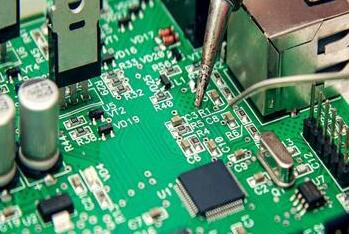Generally speaking, the soldering temperature range of circuit boards is between 180 and 220 ℃. If the temperature is too high, it can cause excessive melting of the solder joints and damage to the components; If the temperature is too low, it may lead to poor quality of solder joints, thereby affecting the performance of the circuit board. The soldering temperature of the circuit board should be maintained within a certain range to avoid affecting the quality of the solder joints.

The soldering temperature of circuit boards is a very important link in the electronic manufacturing process. The height of welding directly affects the quality and performance of circuit boards. Therefore, in the welding process of circuit boards, it is necessary to strictly control the soldering temperature to ensure the quality and performance of circuit boards.
Circuit board soldering is the process of melting solder with heat to connect it to the solder joints on the circuit board. The high or low soldering temperature directly affects the melting degree and welding quality of the solder. If the soldering temperature is too high, it can cause the solder to burn or oxidize, thereby affecting the soldering quality. If the soldering temperature is too low, the solder cannot completely melt, and the connectivity of the welding points will also be affected.
The common soldering temperatures for circuit boards include manual soldering and machine soldering. Manual soldering usually uses an electric soldering iron for welding, and the soldering temperature is generally around 250 degrees Celsius; Machine welding usually uses a wave soldering machine for welding, and the soldering temperature is generally around 260 degrees. Different welding methods and temperatures will have different effects on the welding quality.
During the circuit board soldering process, it is necessary to strictly control the soldering temperature to ensure welding quality. The specific control methods include: selecting the appropriate soldering temperature and method; Using appropriate welding tools and materials; Controlling welding time and speed; Keeping the welding environment dry and clean.
The soldering temperature of the circuit board needs to be within the control range. Normally, the soldering temperature is between 200 and 300 degrees.
For soldering through hole-type components, it is usually recommended to use a temperature of 260 degrees. A temperature of 260 degrees has been proven to be the most suitable temperature for soldering circuit boards. At this temperature, the solder can melt in a short period and the quality of the solder joints can be guaranteed. However, it should be noted that different types of solder and circuit boards have different soldering temperature recommendations, which need to be adjusted according to specific situations.
The excessive soldering temperature of circuit boards can easily lead to the following problems:
1. Soldering point failure
Excessive welding temperature may cause melting or unstable connections at the welding points, as well as short circuits at the welding points
2. Line breakage
The wires or circuits on the circuit board may break due to high soldering temperatures, resulting in disconnected connections or circuit failures
3. Line deformation
Excessive soldering temperature causes expansion of the circuit board material, resulting in deformation of the circuit board and affecting the installation and connection of components
4. Damaged components
Excessive soldering temperature may damage electronic components as the electronic components on the circuit board are sensitive to temperature
5. Oxidation and corrosion
Excessive temperature may cause metal oxidation or corrosion, leading to poor connections or circuit failures
6. Thermal stress
Rapid heating or cooling can cause thermal stress on circuit boards and components, leading to cracks, failure, or damage
The necessity of temperature control for circuit board soldering
1. Avoid damage to components
Controlling the soldering temperature can prevent damage to the components in the circuit board, as when the temperature is too high, the components may melt or be damaged, which is closely related to the control of soldering temperature.
2. Improve the quality of solder joints
The control of soldering temperature and time directly affects the quality of solder joints. When the temperature is not in place or the time is too long, it not only affects the quality of solder joints but also leads to problems such as circuit board cracking.
3. Ensure the reliability of the circuit board
Circuit boards are affected by various temperatures during use, so it is necessary to control the soldering temperature during the manufacturing process to ensure that the circuit board can work normally under various conditions and improve its reliability.
Controlling the soldering temperature can avoid quality problems caused by high or low temperatures on the circuit board, and improve welding quality and reliability.